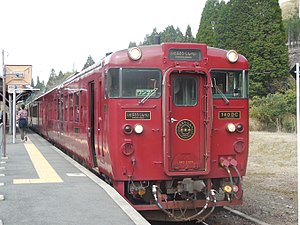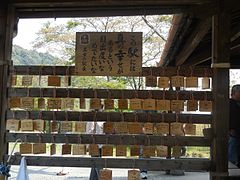Hisatsu line
| Yatsushiro – Hayato | |||||||||||||||||||||||||||||||||||||||||||||||||||||||||||||||||||||||||||||||||||||||||||||||||||||||||||||||||||||||||||||||||||||||||||||||||||||||||||||||||||||||||||||||||||||||||||||||||||||||||||||||||||||||||||||||||||||||||||||
|---|---|---|---|---|---|---|---|---|---|---|---|---|---|---|---|---|---|---|---|---|---|---|---|---|---|---|---|---|---|---|---|---|---|---|---|---|---|---|---|---|---|---|---|---|---|---|---|---|---|---|---|---|---|---|---|---|---|---|---|---|---|---|---|---|---|---|---|---|---|---|---|---|---|---|---|---|---|---|---|---|---|---|---|---|---|---|---|---|---|---|---|---|---|---|---|---|---|---|---|---|---|---|---|---|---|---|---|---|---|---|---|---|---|---|---|---|---|---|---|---|---|---|---|---|---|---|---|---|---|---|---|---|---|---|---|---|---|---|---|---|---|---|---|---|---|---|---|---|---|---|---|---|---|---|---|---|---|---|---|---|---|---|---|---|---|---|---|---|---|---|---|---|---|---|---|---|---|---|---|---|---|---|---|---|---|---|---|---|---|---|---|---|---|---|---|---|---|---|---|---|---|---|---|---|---|---|---|---|---|---|---|---|---|---|---|---|---|---|---|---|---|---|---|---|---|---|---|---|---|---|---|---|---|---|---|---|---|
|
Isaburou-Shinpei train
| |||||||||||||||||||||||||||||||||||||||||||||||||||||||||||||||||||||||||||||||||||||||||||||||||||||||||||||||||||||||||||||||||||||||||||||||||||||||||||||||||||||||||||||||||||||||||||||||||||||||||||||||||||||||||||||||||||||||||||||
|
Hisatsu line (red)
| |||||||||||||||||||||||||||||||||||||||||||||||||||||||||||||||||||||||||||||||||||||||||||||||||||||||||||||||||||||||||||||||||||||||||||||||||||||||||||||||||||||||||||||||||||||||||||||||||||||||||||||||||||||||||||||||||||||||||||||
| Route length: | 124.2 km | ||||||||||||||||||||||||||||||||||||||||||||||||||||||||||||||||||||||||||||||||||||||||||||||||||||||||||||||||||||||||||||||||||||||||||||||||||||||||||||||||||||||||||||||||||||||||||||||||||||||||||||||||||||||||||||||||||||||||||||
| Gauge : | 1067 mm ( cape track ) | ||||||||||||||||||||||||||||||||||||||||||||||||||||||||||||||||||||||||||||||||||||||||||||||||||||||||||||||||||||||||||||||||||||||||||||||||||||||||||||||||||||||||||||||||||||||||||||||||||||||||||||||||||||||||||||||||||||||||||||
| Maximum slope : | 25 ‰ | ||||||||||||||||||||||||||||||||||||||||||||||||||||||||||||||||||||||||||||||||||||||||||||||||||||||||||||||||||||||||||||||||||||||||||||||||||||||||||||||||||||||||||||||||||||||||||||||||||||||||||||||||||||||||||||||||||||||||||||
|
|||||||||||||||||||||||||||||||||||||||||||||||||||||||||||||||||||||||||||||||||||||||||||||||||||||||||||||||||||||||||||||||||||||||||||||||||||||||||||||||||||||||||||||||||||||||||||||||||||||||||||||||||||||||||||||||||||||||||||||
The Hisatsu Line ( Japanese 肥 薩 線 Hisatsu-sen ) is a railway line on Kyushu , Japan operated by JR Kyūshū . It is named after the earlier names of the provinces it connects: Higo , now Kumamoto Prefecture, and Satsuma , now Kagoshima Prefecture . The line branches off in Yatsushiro from the Kagoshima main line and leads via Hitoyoshi and Yoshimatsu to Hayato ( Kirishima ). It is single-track and not electrified.
history
The railway from Yatsushiro to Hayato was opened in several sections as part of the Kagoshima main line from Mojikō to Kagoshima. The route from Hayato to Yoshimatsu has been in operation since 1903, the connection from Yatsushiro to Hitoyoshi followed in 1908 and with the commissioning of the mountain route from Hitoyoshi to Yoshimatsu in 1909, the Kagoshima main line was continuously passable.
From 1927, the Kagoshima main line between Yatsushiro and Kagoshima was led over a new route via Izumu and Satsumasendai along the west coast. The mountain route over Hitoyoshi and Yoshimatsu was henceforth referred to as the Hisatsu line.
Due to the migration of traffic to the longer, but because of the low gradients, more favorable coastal stretch, the Hisatsu line increasingly lost its importance. The opening of the partially parallel Kyūshū Highway in 1995 led to a further decline in traffic. Today the route serves tourist purposes and is economically irrelevant.
Route description
The route runs from Yoshimatsu Station to the right bank of the Kuma River . Shortly after Yoshimatsu, the old Kagoshima main line and the Shinkansen route to Kagoshima are crossed. In the following section from Dan to Watari the route leads along the river. A total of 19 tunnels are required to avoid steep banks and shorten loops. The route leads on the right bank over Sakamoto and Haki. After Kamase the route changes over an imposing steel bridge to the left bank of the river and passes Shiroisho and Isshōchi. Shortly before Watari, the Kuma River is crossed a second time on a steel bridge. After a few kilometers, the valley widens and the tracks run through populated areas some distance from the river and reach the Hitoyoshi town station.
After passing the third Kuma Bridge behind Hitoyoshi, the most difficult section of the Hisatsu Line begins. The route turns into a side valley of the Kuma River and leads uphill through several tunnels. Because of the increasingly difficult terrain, a roundabout was required at Okoba. Okoba train station is within the roundabout and is part of a double hairpin. Behind Okoba the route leads steeply uphill through further tunnels to Yatake, the highest station on the Hisatsu line.
Shortly after Yatake, the longest tunnel on the route will be passed through with the 2096 m long Yatake Daiichi Tunnel. At the north entrance of the tunnel there is a plaque with the following “four-character slogan” 天 険 若 夷, something like “The most difficult place under the sky made smooth.” On the south side it says 引 重 致 速 , “Heavy loads to their destination quickly. "
The following section of the route runs on a steep gradient through several spur tunnels on the mountain slope and offers a wide view of the Ebino plateau. Via the intermediate station Masaki, which is similar to Okoba in a double hairpin, the route leads down into the valley floor to the Yoshimatsu station.
traffic
Especially the piece between Hitoyoshi and Yoshimatsu is praised for its beautiful views as the "Ebino plateau route" ( え び の 高原 線 , Ebinokōgen-sen ). The express stops at Okoba and Masaki stations to get off the train, and also stops twice to take pictures on the open road.
There are no through trains on the Hisatsu Line, but you can:
- Since 2004 the Kyūshū Ōdan Tokkyū ( 九州 横断 特急 , English Trans-Kyushu Limited Express ) offers a direct connection from Beppu via Ōita, Aso and Kumamoto to Hitoyoshi.
- From Kumamoto Hitoyoshi can also be reached with the Limited Express Kumagawa .
- from Yoshimatsu to Kagoshima there is the Limited Express Hayato no kaze .
All express trains run on the route on a connection.
Isaburō - Shinpei
Two pairs of local trains run between Hitoyoshi and Yoshimatsu every day. The trains from Hitoyoshi to Yamagata Isaburō (1858-1927), at the time of the creation of the Hisatsu line Minister for Transport, Post and Telecommunications in the timetable as "Isaburō 1" and "Isaburō 3". The return trains from Yoshimatsu are named "Shinpei 2" and "Shinpei 4" in the course book, after Gotō Shinpei (1857-1929), who was then President of the Railway Authority. The trains stop at all stations, but the timetables have been adjusted with longer stops at intermediate stations and stops at viewpoints on the open route. For these trains, three former suburban railcars of the KIHA 147 series were converted, equipped with a new interior and given a special red color. The trains show the names of the namesake in Japanese and in Latin on the front. In Latin, the ad adopts the ou from Japanese transliteration and deviates from the usual transcription with "Isaburou-Shinpei".
SL Hitoyoshi
From March to November steam trains run several times a week between Kumamoto via Yatsushiro to Hitoyoshi. The car set consists of three four-axle passenger cars with special interior fittings and viewing windows on the end walls of the end cars. Since 2009 the trains have been transported by the 1'C locomotive 58654 "Hitoyoshi". The trains run from Kumamoto to Hitoyoshi in the morning, from where they return to Kumamoto after a five-hour stop. Due to the great demand, reservations are required.
Engineering structures
bridges
There are three major bridges over the Kuma River on the Hisatsu Line.
Train stations
Okoba
The Okoba train station is outside the village in the roundabout of the same name. Due to the topographical conditions and the operational requirements, Okoba has an unusual track plan. The line from Hitoyoshi crosses the Tanabe tunnel, which is in an arch and a 25 ‰ slope, and reaches the station with two platform tracks on a central platform and a siding. Okoba is a terminus. Uphill trains push back into a long pulling track, the end of which is above the Tanabe tunnel and, after another change of direction, drive through a short tunnel and the open part of the roundabout. At the end of the bend, the line passes the train station within sight and shortly afterwards crosses the Tanabe tunnel. At the time of steam operation, most of the uphill trains had to be pushed from Okoba. The locomotive was placed on the train in the hairpin before the exit. Until the end of the steam locomotive era, there was a water tower in Okoba, the base of which still exists today.
Yatake
The Yatake station is at the apex of the mountain route and is now a stop for local trains. The steam locomotive D51 170, which can be viewed while the trains are in motion, is parked in a hall at the station.
Masaki
The small train station is valued for its name "True Luck" ( 真 幸 , Masaki ). Votive boards ( Ema ) are hung up, bridal couples can be photographed there. The popular platform tickets for Masaki can still be purchased at Hitoyoshi and Yoshimatsu stations.
Kareigawa
The former train station and today's stop has existed since the southern section of the route opened in 1903. The station has been vacant since 1984. In 2003 the station building was sold to the city and in 2006 it was listed as a historical monument.
Accidents
On August 8, 1945, a serious railway accident occurred in the 2nd Yamagami Tunnel . A military train with demobilized soldiers that had been pushed in had broken down in the tunnel. Many travelers feared they would suffocate in the smoke-filled tunnel and left the train in the direction of the tunnel exit. Meanwhile, the staff released the brakes. The rolling back train caught the fleeing people and killed more than 50 of them. Since 1963 a memorial has been commemorating the tragic incident.
In 1972, heavy rains caused a landslide that covered Masaki station with sand and stones. An 8 ton stone lying on the platform still bears witness to the incident today. Apparently people were not harmed.
A two-part railcar unit drove into a rock fall on December 15, 2012 between Setoishi and Kaiji, whereupon one axle of the foremost bogie derailed. The train crew and the 45 passengers were unharmed.
photos
- Hisatsu lineage - 肥 薩 線
Stations
| station | Distance (km) |
connections | Place / prefecture | |
|---|---|---|---|---|
| Yatsushiro | 0.0 |
Kagoshima main line " Hisatsu Orange Tetsudō " line |
Yatsushiro | Kumamoto |
| Dan | 5.2 | |||
| Sakamoto | 11.0 | |||
| Haki | 14.4 | |||
| Kamase | 16.8 | |||
| Setoishi | 19.6 | |||
| Kaiji | 23.5 | Ashikita | ||
| Yoshio | 26.7 | |||
| Shiroishi | 29.8 | |||
| Kyūsendō | 34.9 | Kuma | ||
| Isshochi | 39.8 | |||
| Naraguchi | 42.4 | |||
| Watari | 45.3 | |||
| Nishi-Hitoyoshi | 48.4 | Hitoyoshi | ||
| Hitoyoshi | 51.8 | Kumagawa Tetsudō Yunomae Lineage | ||
| Okoba | 62.2 | |||
| Yatake | 71.7 | |||
| Masaki | 79.0 | Ebino | Miyazaki | |
| Yoshimatsu | 86.8 | Kitto Line (Ebino-Kōgen Line) | Yūsui | Kagoshima |
| Kurino | 94.3 | |||
| Ōsumi-Yokogawa | 100.8 | Kirishima | ||
| Uemura | 102.8 | |||
| Kirishima Onsen | 106.5 | |||
| Kareigawa | 112.3 | |||
| Nakafukura | 114.4 | |||
| Hyōkiyama | 116.8 | |||
| Hinatayama | 121.6 | |||
| Hayato | 124.2 | Nippo main line | ||
literature
- Kotsu Shimbunsha (Ed.): Keitai Zenkoku Jikokuhyo. 2012 4gatsu-go. (Small course book Japan, April 2014)
Individual evidence
- ↑ Japan Railway & Transport Review No. 38 . East Japan Railway Culture Foundation, ISSN 1342-7512 , back cover
- ↑ a b c JR Kyushu (Ed.): Nihon-ichi no shasō to kankō-ressha no yama-nobori . (Leaflet on the middle section of the route)
- ↑ Official website of the city of Kirishima ( Memento of the original from May 6, 2014 in the Internet Archive ) Info: The archive link was automatically inserted and has not yet been checked. Please check the original and archive link according to the instructions and then remove this notice. . Retrieved May 5, 2014.
- ↑ Japan Transport Safety Board Annual Report 2013 p. 39 . Retrieved May 4, 2014.








